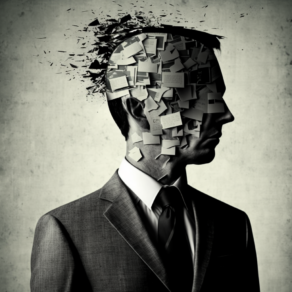Hold onto your seats, folks, because we’re about to dive into a wild ride of cancel culture. But don’t worry, we’re here to make it a little less scary and a whole lot more fun!
Cancel culture is a phenomenon where people are publicly shunned or criticized for their actions, words, or beliefs deemed offensive or problematic by a particular group or community. This form of public shaming and boycotting is seen by many as toxic due to several reasons:
- It stifles free speech and creativity: When people are afraid to express their thoughts or opinions for fear of being canceled, it creates a culture of self-censorship that stifles creativity and stifles the exchange of diverse ideas.
- Lack of forgiveness and redemption: Cancel culture often forgets that people are capable of growth and change. Once someone is labeled as problematic, it’s often difficult for them to redeem themselves and regain the trust of their audience.
- Inflammatory rhetoric: Cancel culture often fuels the fire of division and anger, and the language used to cancel individuals or groups can be extremely inflammatory and polarizing.
- Mob mentality: The power dynamics of cancel culture can be dangerous, as it often involves a large group of people ganging up on a single individual. This can result in an unfair distribution of power and an inability to distinguish between right and wrong.
- It’s not productive: Rather than encouraging open dialogue, understanding, and change, cancel culture often leads to a dead-end with no meaningful resolution or progress.
While cancel culture may be well-intentioned, it’s toxic and can have far-reaching negative consequences. Instead, it’s important to promote a culture of empathy, understanding, and forgiveness that allows for constructive discussions and positive change.
A Short Cancel Culture Story
Elaine Welteroth, former Beauty Director of Teen Vogue, shares a story that will make your jaw drop. She was the first black beauty director in Conde Nast Beauty history and was on a mission to bring a fresh perspective to the table. But, little did she know, she was about to embark on a wild ride that would put her in the crosshairs of cancel culture.
Elaine was eager to write a story about braids, specifically the cultural significance of braids for people of color. She was inspired by her trip to Africa, where she got her Senegalese twists, and wanted to write about the beauty of black hair as a form of activism. Elaine was determined to share her experiences of how black hair can be a political statement, and how it can attract unwanted attention in a white workplace.
She tied in the story of Zendaya’s red carpet appearance with locks, and the offensive language used by red carpet commentators, to show how black hair deserves to be celebrated in its natural state. Elaine was beyond excited to share this story with the world, so she cast a black-French model who resembled Zendaya, and felt she was the perfect fit for the article.
But, oh boy, things took a turn for the worst when the article was published. Someone posted a picture from the article on Twitter with the caption “Cultural appropriation at its finest. Shame on you, Teen Vogue,” and that tweet took off like wildfire. The following day, Elaine was in the news, being accused of posting an anti-black story. To make matters worse, everybody thought the model was white and the article was seen as cultural appropriation.
Looking back, Elaine realized her blind spot. She was a light-skinned black woman, a mixed-race black woman, who was not approaching the story with the sensitivity needed for such a sensitive topic. The thing that stood out the most to her was the sidebar, which only showed light-skinned or fair-skinned people representing a braid look that originates in Africa on dark-skinned black women. This, she realized, was the critical mistake.
So there you have it, folks, a wild ride of cancel culture and a valuable lesson learned. Let’s embrace our differences, learn from our mistakes, and celebrate diversity in all its forms!
Focus Your Response on Impact
Cancel culture is a real thing, and if you do get caught up in it, here’s a pro tip: forget about your intentions and focus on the impact of your actions. Understanding the difference between intention and impact is crucial, especially when it comes to navigating cancel culture.
When you’re called out, take a deep breath, reflect on the impact and focus your response on it. Acknowledge the harm that you caused, show that you understand why it was harmful and start a conversation from a less defensive place. And if you’re part of a company facing controversy, it’s important to address it head-on. Sure, it comes with risks, but it also gives you the opportunity to build a deeper relationship with your audience and communicate who you are and what you’ve learned from the situation.
Now, let’s talk about righting your wrongs. Sometimes, it takes getting it wrong to understand how to get it right. Take the braid story, for example. It sparked a conversation about cultural appropriation and the responsibility of leaders in diverse communities to educate and instill clarity on these sensitive cultural issues.
After the controversy, Elaine and her team had a rich conversation about cultural appropriation, their new standards, casting, and representation. They even came up with a brilliant idea to center marginalized communities in their stories, allowing real girls to explain the difference between cultural appreciation and appropriation. The result was a powerful, historic pivot for their brand and a redemptive moment for their team.
In conclusion, if you make a mistake, own up to it, learn from it and take the necessary steps to redeem yourself, not just for yourself but for the community you serve.
Do’s and Don’ts for Doing the Work
When it comes to doing the work, there are a few key things to keep in mind. First, if you ever find yourself in hot water, don’t go on the defense! Take a step back, listen to what’s being said, and try to understand other perspectives. Empathy is key here, so ask questions and try to put yourself in others’ shoes. If you messed up, say sorry—but make sure it’s a genuine apology full of humility and understanding of the impact of your actions.
Remember, your work and name are your reputation, so you want to own every part of the creative process, both the wins and the mistakes. But that doesn’t mean being too afraid to put your work out into the world. Just be thoughtful about the topics you tackle, especially when it comes to sensitive issues like race, identity, and gender.
And if things don’t go as planned, don’t panic! It’s not the end of the world, and your perspective and voice are still valuable. Just take a moment to learn from your mistakes, then jump back in and do the work!






Leave a Comment